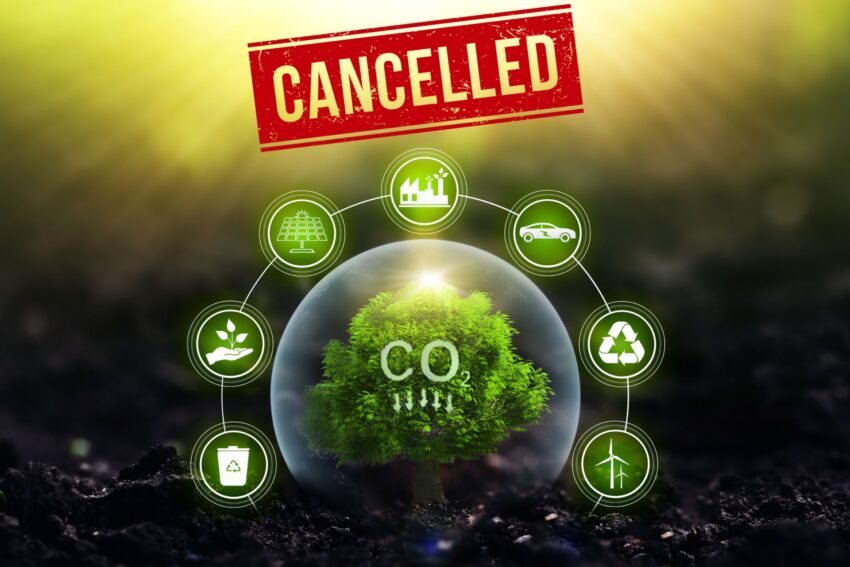On March 12, 2025, the Environmental Protection Agency dropped a bombshell that’s got folks across rural America breathing a sigh of relief. Under the new Trump administration, the EPA announced it’s rolling back a slew of climate-related emissions rules slapped on the books during Biden’s tenure. For farmers who’ve been sweating under the weight of ever-tightening regulations, this isn’t just a policy shift—it’s a lifeline. The move takes aim at everything from tailpipe emissions standards to power plant rules, and it’s about time someone in Washington started looking at the real-world costs of all this green dogma.
Let’s start with what this rollback actually does. The Biden-era rules were a laundry list of mandates aimed at slashing greenhouse gases—think stricter limits on vehicle exhaust, coal plant smokestacks, and even the methane that comes from a cow’s backside. The EPA’s justification? Some 2009 “endangerment finding” claiming carbon dioxide and its cousins are warming the planet to apocalyptic levels. Now, the Trump team’s EPA is hitting pause, saying it’s time to revisit that science and the regulatory mess it spawned. For farmers, this is about keeping the lights on, the tractors running, and the bills paid.
Take those tailpipe emissions rules, for instance. Biden’s crew pushed hard for electric vehicles, jacking up standards so high that gas-powered trucks—the kind hauling grain or livestock—were getting squeezed out. Farmers don’t have the cash to swap out a perfectly good F-250 for some battery-powered rig that costs twice as much and dies halfway through a field. Plus, where’s the charging station out by the back forty? The EPA’s rollback means manufacturers can ease off the EV pedal, keeping affordable, reliable trucks on the market. That’s one less headache when you’re already juggling seed prices and weather that’s never been predictable, no matter what the climate folks say.
Then there’s the power plant rules. Biden’s EPA wanted coal and gas plants—ones that keep rural electric co-ops humming—to either clean up their act or shut down. Sounds noble until you realize those plants keep the grid stable and the rates low. Farmers rely on that juice for irrigation pumps, barn heaters, and grain dryers. When power costs spike or the lights flicker because some bureaucrat decided coal’s too dirty, it’s not Wall Street that feels it—it’s the guy in overalls trying to get his corn in the bin. Rolling back these rules keeps energy prices from skyrocketing, and that’s money staying in the pocket instead of bleeding out to some green energy pipe dream.
And don’t get me started on methane. The Biden folks were obsessed with cracking down on cow burps and manure piles, as if farmers are out there twiddling their thumbs instead of managing herds. Methane rules meant more paperwork, more equipment upgrades, and more costs—all based on shaky claims about how much a steer’s gas really moves the thermostat. The EPA’s about-face here is a nod to reality: farming’s messy, it’s essential, and it doesn’t need D.C. micromanaging every whiff of air. Less red tape means more time tending the land and less spent chasing compliance that doesn’t put food on anyone’s table.
Now, the climate crowd’s howling that this rollback is some grand betrayal of science. They’ll trot out charts and graphs, claiming we’re doomed without these rules. But let’s be real—temperatures have been up and down since the Dust Bowl, and no one’s proved slapping a farmer with emissions fines changes that. The EPA’s own data shows agriculture’s a tiny slice of the emissions pie — industry and cities are the real hogs. So why keep piling on rules that hit rural folks hardest while the urban suits keep guzzling power? This rollback isn’t denial; it’s common sense, cutting through the hype to focus on what keeps America running.
For the farmer staring down another season of tight margins, this EPA shift is a rare bit of good news. It’s not about rejecting progress—it’s about rejecting policies that sound good in a conference room but fall apart in the field. Lower fuel costs, cheaper power, and fewer hoops to jump through mean more breathing room to do what they’ve always done: grow the crops and raise the livestock that feed the rest of us. Washington might not get it, but out here, that’s what counts.


